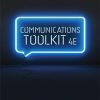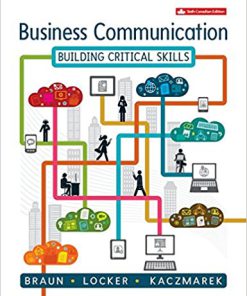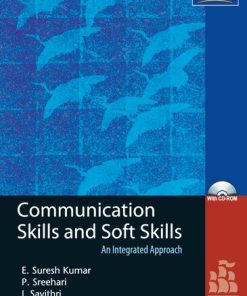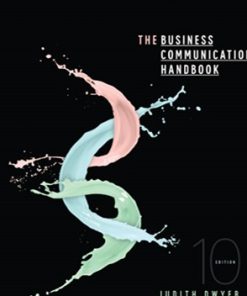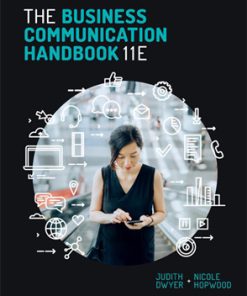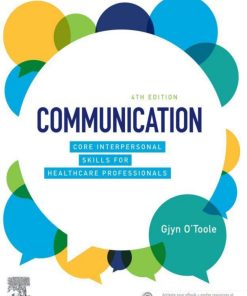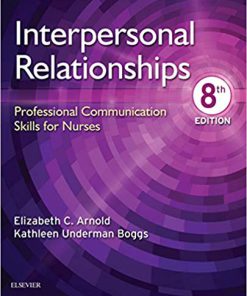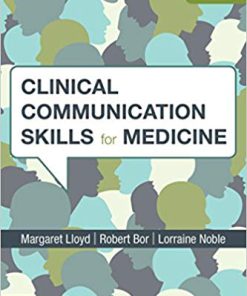(eBook PDF) Communication Skills Handbook, 4th Edition
$50.00 Original price was: $50.00.$35.00Current price is: $35.00.
(eBook PDF) Communication Skills Handbook, 4th Edition – Instant Download
(eBook PDF) Communication Skills Handbook, 4th Edition – Digital Ebook – Instant Delivery Download
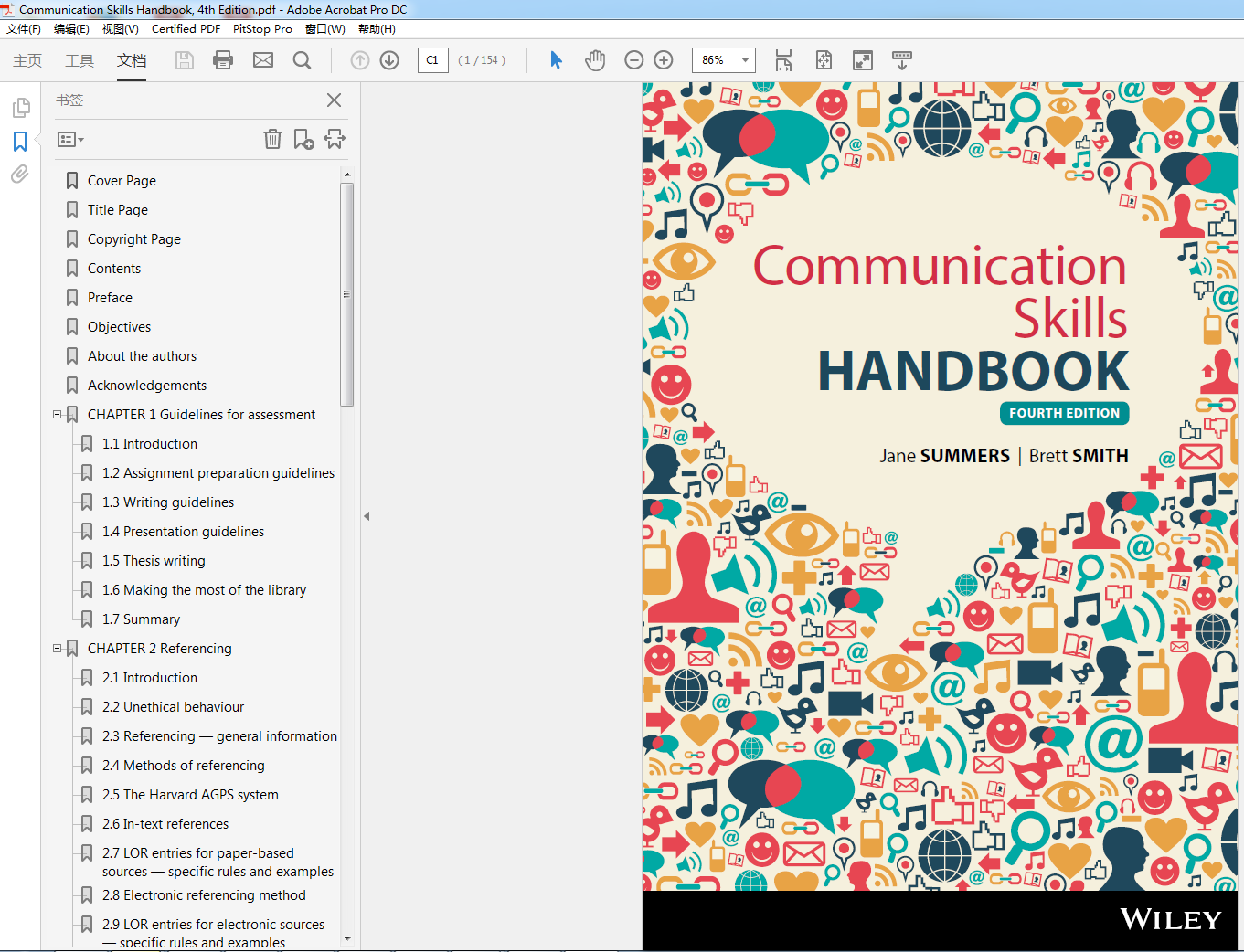
Product details:
ISBN: 978-0-730-32705-9
Author: Jane Summers, Brett Smith
The new fourth edition of this popular handbook has been revised and updated to equip contemporary students with the written and oral communication guidelines they need to succeed at university and beyond.
Suitable for use across all disciplines, the handbook provides successful approaches to researching, writing and referencing, along with a wealth of examples and practical tips for preparing and presenting oral reports, essays and assignments.
Table contents:
1. Guidelines for assessment 1
1.1 Introduction 3
1.2 Assignment preparation guidelines 3
1.3 Writing guidelines 4
1.3.1 Nonoffensive language 8
1.3.2 Use of numbers 8
1.3.3 Tables, figures and graphs 9
1.3.4 Titles of assessable work 10
1.3.5 Foreign terms and acronyms 10
1.3.6 Parentheses 10
1.3.7 Points of ellipsis 11
1.3.8 Bullet points 12
1.4 Presentation guidelines 12
1.5 Thesis writing 14
1.6 Making the most of the library 16
1.6.1 What is in the library? 16
1.6.2 Finding your way in the library 16
1.6.3 Ways to access information 16
1.7 Summary 17
2. Referencing 19
2.1 Introduction 21
2.2 Unethical behaviour 21
2.2.1 Plagiarism 21
2.2.2 Collusion 23
2.3 Referencing — general information 24
2.3.1 When to provide a reference 24
2.3.2 Referencing — a helpful hint 25
2.4 Methods of referencing 25
2.5 The Harvard AGPS system 26
2.6 In-text references 26
2.6.1 Format 26
2.6.2 When to include page numbers 27
2.6.3 Footnotes 27
2.6.4 Short quotations 27
2.6.5 Long quotations 27
2.6.6 Single author 28
2.6.7 Two or more authors 28
2.6.8 Two or more works in one citation 29
2.6.9 Newspapers 29
2.6.10 Personal communications 30
2.6.11 Anonymous works 30
2.6.12 Publication date unavailable 30
2.6.13 Sponsoring organisation 30
2.6.14 Unpublished works 31
2.6.15 Citations for sources other than the original 31
2.6.16 Tables and figures either extracted or taken whole 32
2.7 LOR entries for paper-based sources — specific rules and examples 32
2.7.1 LOR — book citation 33
2.7.2 LOR — article or chapter in an edited book 33
2.7.3 LOR — lecture notes/study notes 33
2.7.4 LOR — books of readings 34
2.7.5 LOR — indirect quotation 34
2.7.6 LOR — article in journal 34
2.7.7 LOR — sponsoring organisation 34
2.7.8 LOR — multiple publications by the same author 35
2.7.9 LOR — conference paper, working paper series and thesis 35
2.7.10 LOR — article in newspaper or magazine 35
2.7.11 LOR — unpublished works 36
2.8 Electronic referencing method 36
2.8.1 Electronic referencing — general information 36
2.8.2 In-text references — electronic sources 37
2.8.3 LOR — electronic sources, general 37
2.9 LOR entries for electronic sources — specific rules and examples 37
2.9.1 CD-ROM — book/electronic books 37
2.9.2 Electronic journal articles 38
2.9.3 Internet sites (author and date available) 38
2.9.4 Internet sites (author and date not available) 38
2.9.5 Newspaper articles 38
2.9.6 Discussion group messages/Weblogs/Wikis and podcasts 39
2.9.7 Personal email message 39
2.10 Films, videos, television and on-line images 39
2.11 Legislation and legal authorities 40
2.12 Summary 40
2.13 Example of the Harvard AGPS referencing system 41
2.14 List of references 42
3. Report writing 43
3.1 Introduction 45
3.2 Report structure 45
3.2.1 Assignment cover sheet 45
3.2.2 Letter of transmittal 45
3.2.3 Title page 47
3.2.4 Executive summary 47
3.2.5 Table of contents 49
3.2.6 Introduction 49
3.2.7 Body 50
3.2.8 Conclusions 51
3.2.9 Recommendations 51
3.2.10 Bibliography or LOR 51
3.2.11 Glossary 52
3.2.12 Appendices 52
3.3 Summary 52
4. The case study 53
4.1 Introduction 55
4.2 Preparing a case analysis 56
4.3 The structure of the case analysis report 58
4.3.1 Introduction or case background 59
4.3.2 Body of the analysis 60
4.3.3 Formulation of alternatives or possible solutions 62
4.3.4 Recommendations or choice of solutions 64
4.3.5 Implementation plan 64
4.4 Strategic analysis tools 66
4.4.1 The SWOT analysis 66
4.4.2 Situation analysis 67
4.5 Summary 67
4.6 List of references 68
5. Essay writing 69
5.1 Introduction 71
5.2 Selecting the topic 71
5.3 Analysing the topic 71
5.4 Planning 72
5.5 Research 72
5.6 Writing the essay 73
5.7 Style 74
5.8 Sample essay 74
5.9 Summary 78
5.10 Some variations on the formal essay structure 78
6 Oral presentations 79
6.1 Overview 81
6.2 Oral presentations at university 81
6.3 Preparing the presentation 82
6.3.1 Presentation venue 83
6.3.2 Structure of the presentation 83
6.3.3 Introduction and conclusion 83
6.3.4 Body of the presentation 84
6.3.5 Visual aids 84
6.3.6 Audience handouts 85
6.3.7 Practising the presentation 85
6.3.8 Planning for contingencies 86
6.3.9 Just before the presentation 86
6.3.10 Equipment 86
6.3.11 Anxiety 86
6.4 Delivering the presentation 87
6.4.1 Delivery speed 87
6.4.2 Gestures 87
6.4.3 Audience rapport 87
6.4.4 Reading the speech 87
6.4.5 Stance during the speech 88
6.4.6 Humour 88
6.4.7 Nervousness 88
6.4.8 Annoying habits 88
6.4.9 Presenting in teams 88
6.5 Handling questions from the audience 89
6.6 Presentation software 89
6.6.1 Preplanning 89
6.6.2 How will the presentation be used? 90
6.6.3 Creating the presentation 90
6.6.4 Rehearsing the presentation 95
6.6.5 Delivering the presentation 95
6.6.6 Using presentation software: summary 96
6.7 On-line presentations and meetings 96
6.7.1 Presenting over the web 97
6.7.2 Web meetings 97
6.8 Summary 98
6.9 Alternatives to oral presentations for distance education students 99
7 Examination techniques 101
7.1 Introduction 103
7.2 General hints 103
7.2.1 When to start studying 103
7.2.2 Revision 103
7.3 Pre-examination planning 104
7.3.1 Perusal time 105
7.3.2 After the examination begins 105
7.4 Content and style of questions 107
7.4.1 Subject matter limited 107
7.4.2 Scope limited 107
7.4.3 Combined subject and scope limited 107
7.4.4 Multiple-choice questions 107
7.4.5 Short-answer questions 108
7.4.6 Point-by-point questions 108
7.4.7 Essay-style questions 108
7.4.8 Hybrid questions 109
7.4.9 Case studies 109
7.4.10 Other types of questions 109
7.5 Answering exam questions — what to do and what to avoid doing 109
7.6 Summary 110
8 Winning the ’right‘ job 113
8.1 Introduction 115
8.2 The job search 115
8.2.1 What is the ’right‘ job? 115
8.2.2 Conventional ways to find the ’right‘ job 116
8.2.3 The Internet 116
8.2.4 On-line recruitment sites 117
8.2.5 Social media 117
8.2.6 Once opportunities are identified 118
8.3 Preparing ’my story‘ 119
8.3.1 Research the job requirements 119
8.3.2 What should my job application contain? 119
8.3.3 The covering letter 119
8.3.4 Preparing an effective CV 119
8.3.5 The format of your CV 120
8.3.6 Answering selection criteria 121
8.3.7 Referees‘ reports 122
8.3.8 Dos and don‘ts 122
8.3.9 Summary 123
8.4 How will I be ’assessed‘ by my potential employer? 123
8.4.1 Preparation 123
8.4.2 The interview 124
8.4.3 Questions that can be difficult to handle 125
8.4.4 Telephone interviews 126
8.4.5 Bring the interview to a conclusion 127
8.4.6 Dos and don‘ts 127
8.4.7 Psychometric testing 127
8.5 What do I do after the interview? 128
8.6 Summary 129
8.7 List of references 129
Resources 131
Key instructions 133
List of references 134
INDEX 135
People also search:
communication skills handbook 4th edition pdf free
4 important communication skills
the handbook of communication skills pdf
communication skills handbook
4 communication skills
messages the communication skills book 4th edition pdf
list 4 communication skills
You may also like…
Business & Economics
Communication Skills and Soft Skills An Integrated Approach 1st edition- eBook PDF
Communication
Communication
(eBook PDF) Interpersonal Relationships: Professional Communication Skills for Nurses 8th Edition


